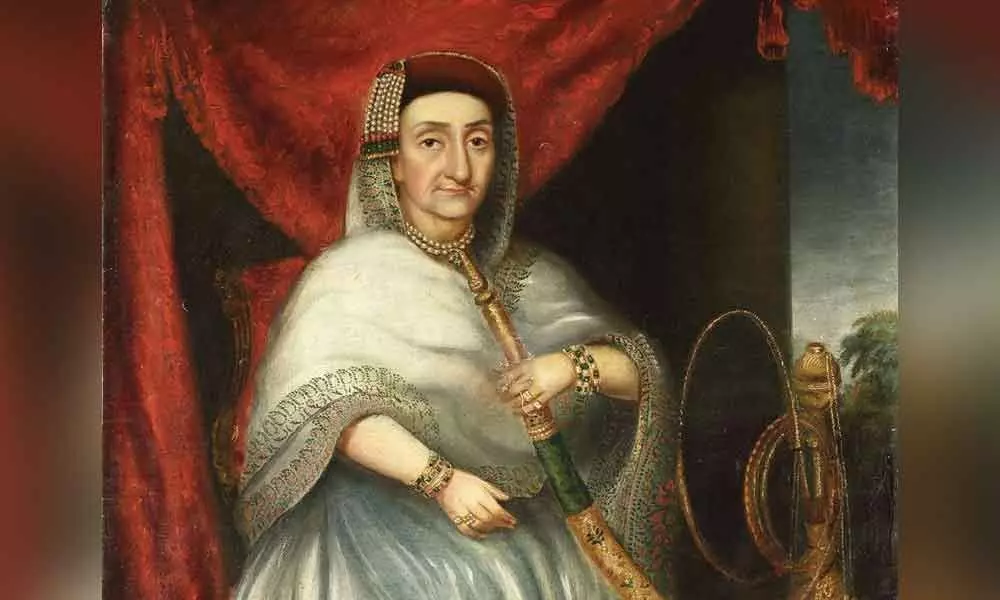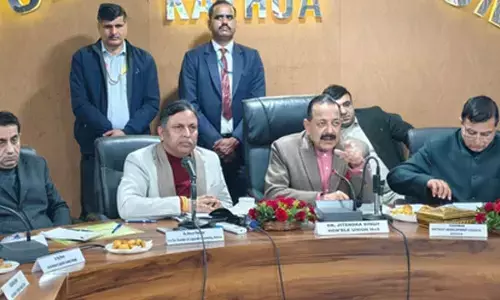Life and times of Farzana or Begum Samru

Life and times of Farzana or Begum Samru
Consider a girl called Farzana. No one knows for sure where she came from, and even the exact year of her birth is contested, though we can assume it was in the middle of the 18th century. Some sources say she was Kashmiri, others say she was born to the second wife of a man in Kutana.
Consider a girl called Farzana. No one knows for sure where she came from, and even the exact year of her birth is contested, though we can assume it was in the middle of the 18th century. Some sources say she was Kashmiri, others say she was born to the second wife of a man in Kutana.
Her biographer, John Lall, speculates that Farzana's mother was the mistress of a man called Asad Khan, and that the former "became the target of her stepson's venom after the death of her husband". There is speculation, also, that the woman was a tawaif. Mother and daughter fled to Shahjahanabad, says Lall, but Farzana's mother did not survive.
Farzana found herself in a kotha in Chawri Bazaar (the same kotha, Lall says, where her mother had performed years before, and where the embattled duo was headed in the first place). It is here that she trained in music and dance, and here that she started to perform.
In 1765, five years after she is said to have arrived at the kotha, she met a European mercenary called Walter Reinhardt. More popularly known as Samru, he led four battalions that consisted of at least 2,000 soldiers. He had made an enemy of the British because of his leading role in the Patna massacre of 1763.
Farzana was young, too young — a teenager, in a land where the age of consent would, almost a hundred years after she met Reinhardt, be fixed at 10, and fiercely contested many times afterwards. Reinhardt was in his forties. For the next 13 years, Farzana was, as historian Durba Ghosh writes, "his constant companion".
Lall imagines she "had a will of her own" and that "she accepted the new life this strange chance had thrust upon her" — which he had no way to claim, as she did not leave a memoir to articulate how she really felt about this. All we know is that any way we look at it, she was a child who was simply given no choice in the matter.
Ghosh tells us that the word Begum was a signifier for women of noble birth and was rarely used as an alternative for the word Mrs, as it was in Farzana's case. No one knows if they were ever legally married, but in the public eye they were as good as married. Ghosh argues that the act of her naming had a lot to do with this.
In 1774, Reinhardt asked the Mughal emperor, Shah Alam, for jaidad, or land, which he was granted in Sardhana two years later. This remarkable change in station, argues Ghosh, was possible because of Begum Samru's intervention. The decision to settle in Sardhana, too, was supposedly hers — this was the region of her birth. When Reinhardt died in 1778, she inherited what he had — his battalions, his land, and with it, the title of the jagirdar of Sardhana.
As Ghosh points out, being a politically influential woman partner was not what set Begum Samru apart. This was fairly common. What was unusual was the fact of her succession. She not only found favour with the officers of Samru's battalions, who preferred her to his son from another woman, but also Shah Alam himself confirmed her position.
Consider Joanna. Three years after Samru's death, Begum Samru was baptised, and gained this moniker. One of the many things this did, politically, was that it "successfully obscured her status as a dancing girl," says Ghosh. "She represented herself alternately as a Muslim noblewoman, a Catholic aristocrat, a pious Christian and patron, and benefactor and benevolent ruler to the people of Sardhana."
Consider Zeb-un-nissa, for this is the name Shah Alam granted her for her assistance in maintaining the rapidly waning power of his empire.
What Farzana could not have chosen, Begum Joanna Samru Zeb-un-nissa could. In 1790, she met a Frenchman called Armand Le Vassoult who joined her battalions, and three years later married him. Consider, with this marriage, her public proclamation that she was simultaneously Joanna Nobilis Sombre, as well as Zeb-un-nissa.
She had married for love, but it ruined her politically. The battalions that had been so loyal to her rebelled against him, so much so that two abandoned her in favour of Reinhardt's son, whom they had formerly rejected so that she could succeed. At this time of turmoil, the couple was forced to escape Sardhana; Armand lost his life, and the Begum was briefly captured before being given back her former position.
Political power changed hands but she was able to maintain her own position, and even improve it, by negotiating not only with the Mughals, but also with the Marathas and the British. This did not go unnoticed — she was a source of great interest for colonial travellers. To them she was gracious and unfathomable — her clothes were not only "unfeminine", they combined Mughal and European styles, much like her names. Nor was she obsequious to them — for their visits, she hired entertainers, including actors who satirised them openly.
In her lifetime she did much to improve Sardhana: "As a local ruler, she improved living conditions, introduced agricultural reforms, and promoted civil services by building schools and hospitals," writes Ghosh.
She has not been erased from history, though she is not remembered with the same fervour which accompanies memories of more palatable women rulers. But her political acumen is sometimes described in ways that show the limits of our cultural imagination when it comes to women. Too many accounts of her life convey an almost tabloid-like fascination of her possible romances with European men and describe her as an upstart.
In 1822, over a decade before she died an extremely wealthy woman, Farzana built the Basilica of Our Lady of Graces, which to this day attracts visitors to Sardhana like nothing else does. It is here that her heir, David Dyce Sombre, commissioned Italian sculptor Tadolini to create a memorial to her life. In white Carrara marble, she holds court, overlooking scenes from her life and rule. In her hands she holds the scroll that confirms her claim over Sardhana, ultimately unencumbered by her relationship to a man.
(This article was first published on www.firstpost.com. Republished with their permission)
















